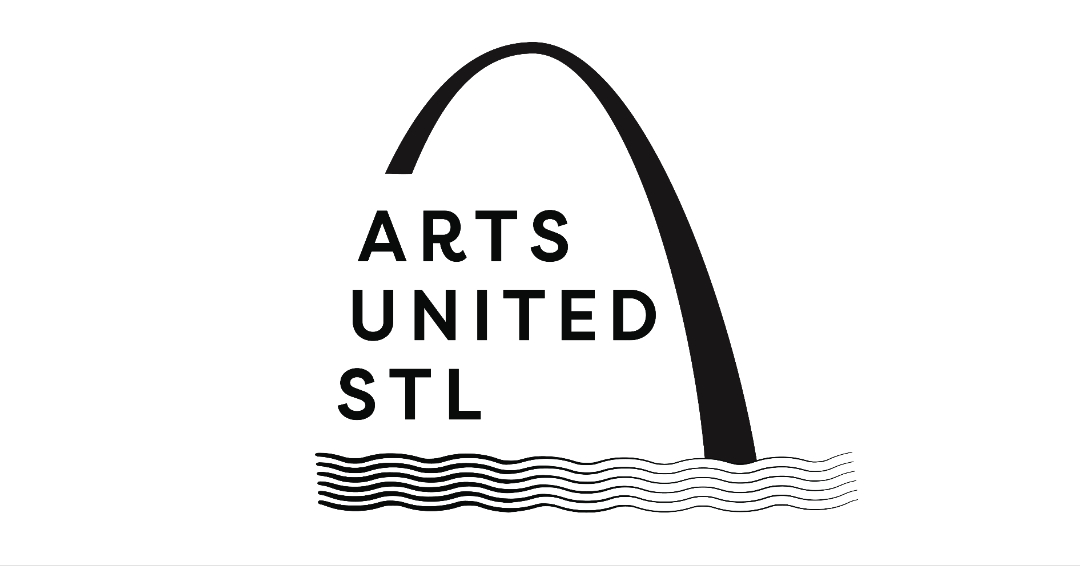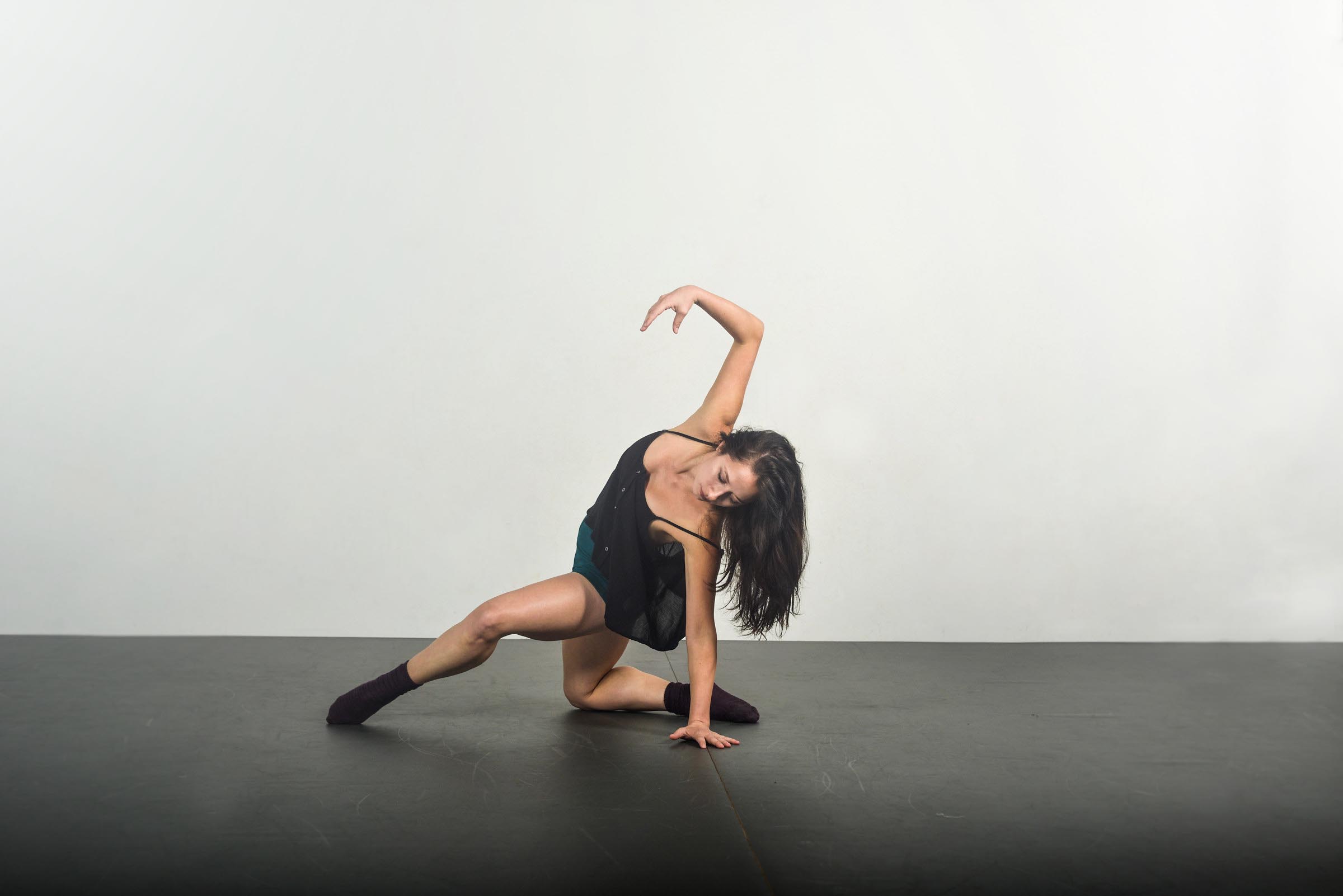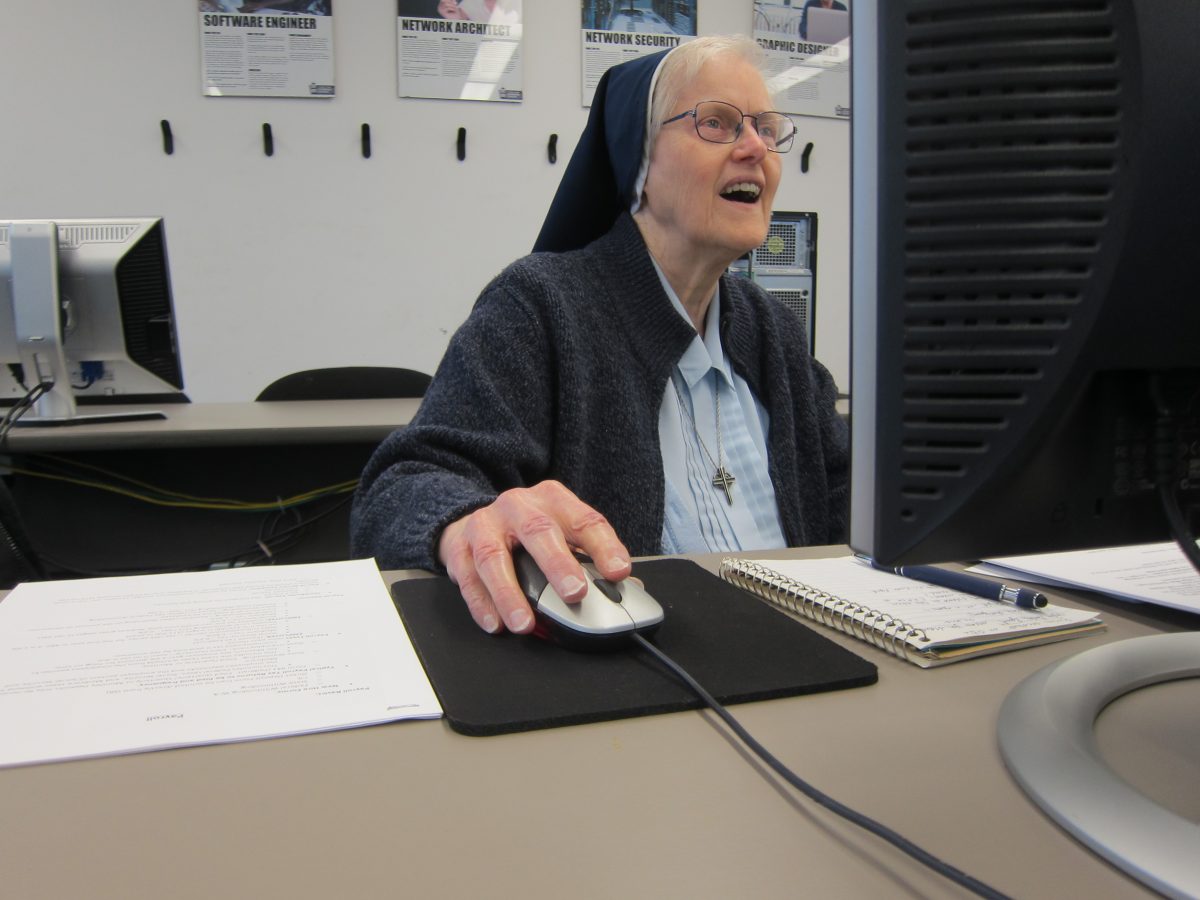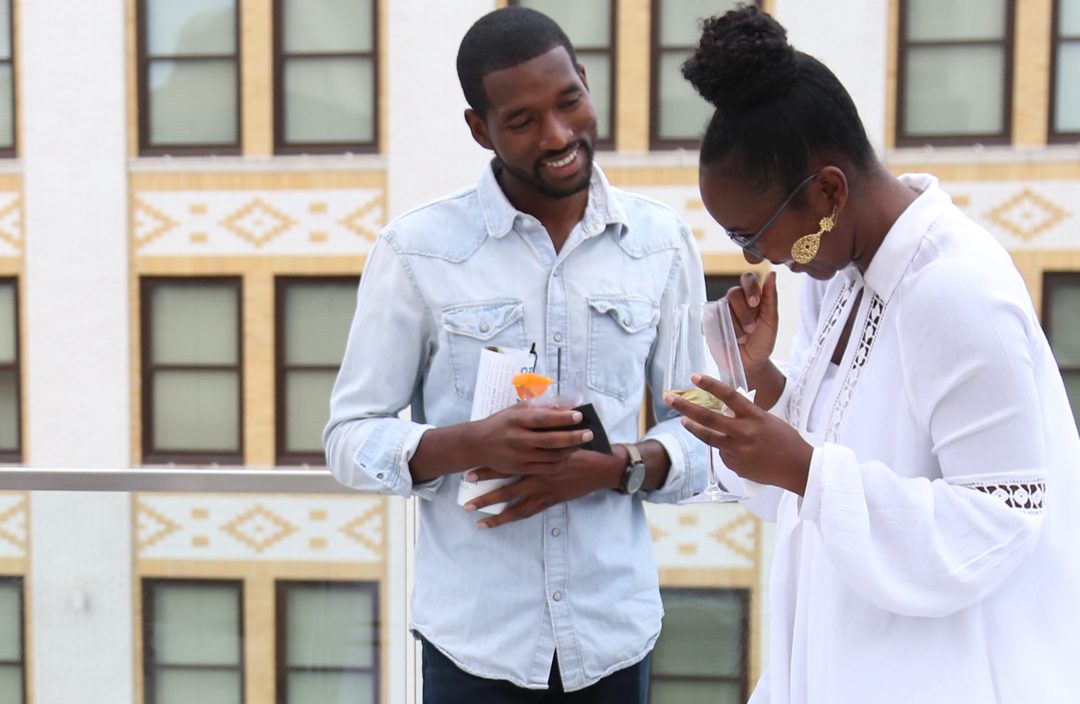St. Louis-based Consuming Kinetics Dance Company will begin its 11th year May 1, so we checked in with Arica Brown, Founder/Artistic and Executive Director, to talk about the ups and downs the past decade and a year have brought for her and the resident organization.
Like many of the Kranzberg Arts Foundation performing arts residents, CKDC has been virtually active since COVID-19. The dance company has pivoted their educational programs to Patreon, a platform in which users can pay for digital content at various price tiers. Check out CKDC classes on Patreon here.
Q: How are you?
A: I’m doing pretty well, actually. There’s always a silver lining … I’ve been able to get really caught up on all things business. Our files are super organized right now, I’ve gone through all of our archives of videos and images … We updated our website. We’re finally future-focused looking at some strategic planning and development, and we have already planned to hire our second full-time employee this year, which we’re still optimistically moving forward with.
We miss everyone. It’s weird for me, as an extrovert, to not be interacting and collaborating with people and creating art, but we’re adapting and I certainly have found some joy in this sad time.
Q: Where did the idea to start a dance company come from?
A: I always feel a little bit guilty telling the story because it’s not as exciting as I think people hope it is. In 2009, I was right out of undergrad and I wanted an opportunity to continue choreographing, because I found dance really late in life, and I found choreography even later in life … So with my dance degree, I had a full-time career in IT, but I was keeping the dancing going on the weekends and evenings, so I was just as busy as ever just like I was in school.
A group of friends of mine and a few more community dancers that we recruited were just rehearsing and the only performance opportunities that we had were just these organized St. Louis events … that’s basically it. We didn’t have our own concerts, we didn’t have seasons. We used the name Consuming Kinetics Dance Company, and we fully committed to that identity and saw ourselves as a pre-professional company, we just weren’t doing that much because we all had full-time jobs elsewhere.
At that point, I had been working for a couple different dance studios teaching around St. Louis, and I was teaching some kids classes — adult classes were not (common) in 2009 when I started the company. And as people started to become aware of us, they would ask if they could come to rehearsals, but they didn’t want to dance professionally, they didn’t want to go on stage or anything, they just wanted to do the warm-up.
So, I started to realize there’s a market in St. Louis for adults who wanted to dance for extracurricular or for an alternative to whatever other fitness thing they could be doing. I started observing nationally to see if this was a thing … I found that it was not uncommon in the Pacific Northwest and on the West Coast to have a studio that opens exclusively to offer adult classes or companies, like ours, that has an education program … Eventually we started our own business inside the studio and after a couple of years, it just really grew … we outgrew the space and eventually it became a full-time job … I left my job … I always say I didn’t “found” the company, the company found me. I think my biggest (skill) is just bringing people together, and being community-focused, so I’m not good at saying no, and I’m really good at meeting the demands of the community. That’s how it all started.
Q: When you started CKDC in 2009, what music were you singing along to in your car?
A: Oh my God, I love this! There’s a Canadian band named Stars and definitely that was in the CD player of my car playing constantly 24/7. Especially in spring and fall with the windows down, I’d definitely be singing those songs at the top of my lungs as I’m driving around St. Louis.
And then also a little bit more inspiration for my serious, artistic side is a band called Lydia, which I named my cat after actually, because I think Lydia the band is perfect, and I think that my cat is perfect. They are very different now than they were back then, but they had a male and female vocal lead that shared this really beautiful melodic interlacing, catching, pseudo-folk pop music.
I was also starting my obsession with Drake.
Q: Where has dance taken you in the past 11 years, geographically speaking?
A: Part of our strategic plan, our three-year-action plan even, this year our big milestone was hiring a full-time person because one full-time person cannot sustain this org, and next year we hope to have a weekly or monthly stipend for our artists during rehearsals, so we hope to grow in that way, and our third year out, touring and traveling at least in the Midwest is a priority for us.
So far, myself and my assistant artistic director Ashreale, who we’re bringing on full-time this year, we’ve been the only two who have officially taken business trips except last year in 2019, we took a piece of mine to the Exchange (Choreography) Festival (in Oklahoma).
We definitely want to grow our national visibility, and so to this point, it’s been mostly business research since 2009. Every year I would go back, check in on the studios and companies I identified and create relationships with their directors and learn about the new ones that have popped up. Ashreale and I went international, I think it was in 2018. We went to Dublin, Ireland, and also London, just to take dance classes and see where we were on an international scale and kind of how we fit in and see if there are other progressive things we need to kind of get on the boat with.
It was a really great experience. She and I saw one of the most memorable concerts we’ve ever seen in our lives when we were in London, it was just unbelievable and it was a two-man dance performance. I even emailed whoever was the artistic director of Dance St. Louis at the time, it was like an interim and I was like, “You need to bring them here.” We were just so into it. So mostly for inspiration and business growth and seeing how other people run classes making sure we’re keeping up with the times. It’s taken me all over the United States, for sure, and then a little bit internationally, and hopefully more of that in the future.
Q: What’s something you’ve thought about trying in the past 11 years but haven’t yet?
A: In alignment with bringing on Ashreale this year, I hope to have more time that is not work.
A lot of people will say, “You’re so lucky you get to do what you love for a living,” and while that is absolutely true and I am so grateful, what people sometimes fail to realize is that you can get burnt out on things that you love just as much as you can get burnt out on something that you don’t love so much.
I would definitely say that the goal is to share the labor of love and be able to employ another full-time artist, which is a part of our mission — to support artists who want to work full-time, and also less things will fall through the cracks … All of those things will help me personally be able to react from a more calm state and be able to better tackle obstacles that come our way including concert cancellations and ongoing struggles with the pandemic, if that is a thing, and who knows what else.
The life of a nonprofit is always torrential and it can be traumatizing at times, but to have another person on my team tackle that and go into the darkness with, I think it’s going to be a huge emotional benefit for me.
Q: What is your favorite dance move?
A: Hahaha, something that’s codified that has a name that I can think of is “banking,” like banks of a river … it’s like a slide on the ground on one leg on the outside of your shin so a little bit hitting the meaty part of your calf muscle and your top arm circles over your head like a helicopter and you just glide on the floor, and there’s so many variations on that move. I love floor work so that’s one that has a term I can assign to it and most people will know if they are dancers. I’m not into ballet, I’m not a “bunhead” or anything, I don’t love pirouettes and jumps, I just love dance as an expressive and healing art.
Q: So, in a life where you might go to the club, are you banking on the dance floor?
A: Hahaha, no, I’m definitely going to pull out my hip hop moves and social dance skills, and I love going out to dance, so definitely that happens in my world. That may or may not be how I found out I love to dance.
Q: Can you recall a time in the past 11 years that has been more challenging than dealing with COVID-19?
A: Yes, and that’s one of the things that I keep trying to remind myself of, is that we’ve been through worse, hypothetically, right? We don’t know how long this thing is going to go on, but like Wednesday, April 29, is our anniversary of the worst hardship that we ever had to overcome. … We were renting from another studio in 2015, and our pretty informal leasing agreement got terminated with no notice, day of. We were ceasing all of our classes and rehearsals in the space. And so we had a student dance concert coming up in a couple of weeks … and we were working on a professional concert that we ended up combining our student and professional companies in one night because of the hardship.
I just remember myself and my two associate directors at the time just sat on my floor of my apartment and wondered, “Is it over? Are we just going to fold after five years, or are we going to suit up and make this thing work?” We didn’t give up obviously. We spent the entire summer — May, June, July — renting from random facilities all over St. Louis … and we just took a month at every location and got feedback from our clients… all the while I was searching real estate, and that’s when we found our studio at 460 Whittier, which is just a couple blocks east of where we are now. We were at Whittier and Olive, now we’re at Taylor and Olive.
We really have grown in this neighborhood, and everything’s changed, you know, things that we thought were benefits to our organization like being under someone else’s roof and paying a sub rental fee and not having all the overhead. I mean, for sure, our expenses are astronomical now compared to what they were, but our exposure has also increased over a hundred fold. Just the physical act of having your own brick-and-mortar and your own logo on the door and traffic driving by and seeing you, has changed everything for us. We’ve been able to further our mission of making dance accessible to everyone and spreading the joy of dance … Everything changed, again it was another hardship time, it was something that looked like an obstacle that we could never overcome, yet somehow it ended up being the best thing that could have ever happened for us.
I always quote one of my favorite artists, Jen Sincero, she says, “On the other side of your fear, is your freedom.” … We’ve been through worse, and we can survive this. We’ve done it before.
Q: What is one thing you’re proud of?
A: I’m so proud that May 1 is going to be our 11th year, like I can’t believe it. We’ve been celebrating 10 years for a whole year, it doesn’t even feel like the end of our 10-year celebration, and you know, we can’t really market 11 years like we’ve marketed the 10-year celebration … But me, personally, I’m super celebrating because I feel too young, and I don’t even understand how it’s already been 11 years, but it’s pretty incredible.
Q: What advice would you give yourself 11 years ago; what did 2009 Arica need to hear?
A: Wow, that’s personal, but the huge difference between me in 2009 and currently, like the advice I think I would have benefited from the most is to not allow exterior circumstances to impact my inner calmness and happiness.
It was a much bigger struggle back then, before I had a full-time salary to do this, and before we had donors, before we had infrastructure. I mean I kept going obviously, tenacity saved the company, but I had a lot of times feeling sorry for myself. “Why is it like this? Why doesn’t St. Louis support the arts? How come dance is underfunded?”
And then I just took control, because if you can’t get what you need, then you have to manifest it, and I wish that back then I would have learned some of those lessons earlier because maybe we would have grown to this point sooner, and be already touring by now.
Q: What are you grateful for today?
A: I am grateful for our conversation today. Quarterly taxes are due, it’s a stressful week and I have to do payroll and I’ve only seen my boyfriend and my cat for over a month … hahaha … not that I’m mad — they’re great company, but it was great to talk to somebody outside of my new norm.













